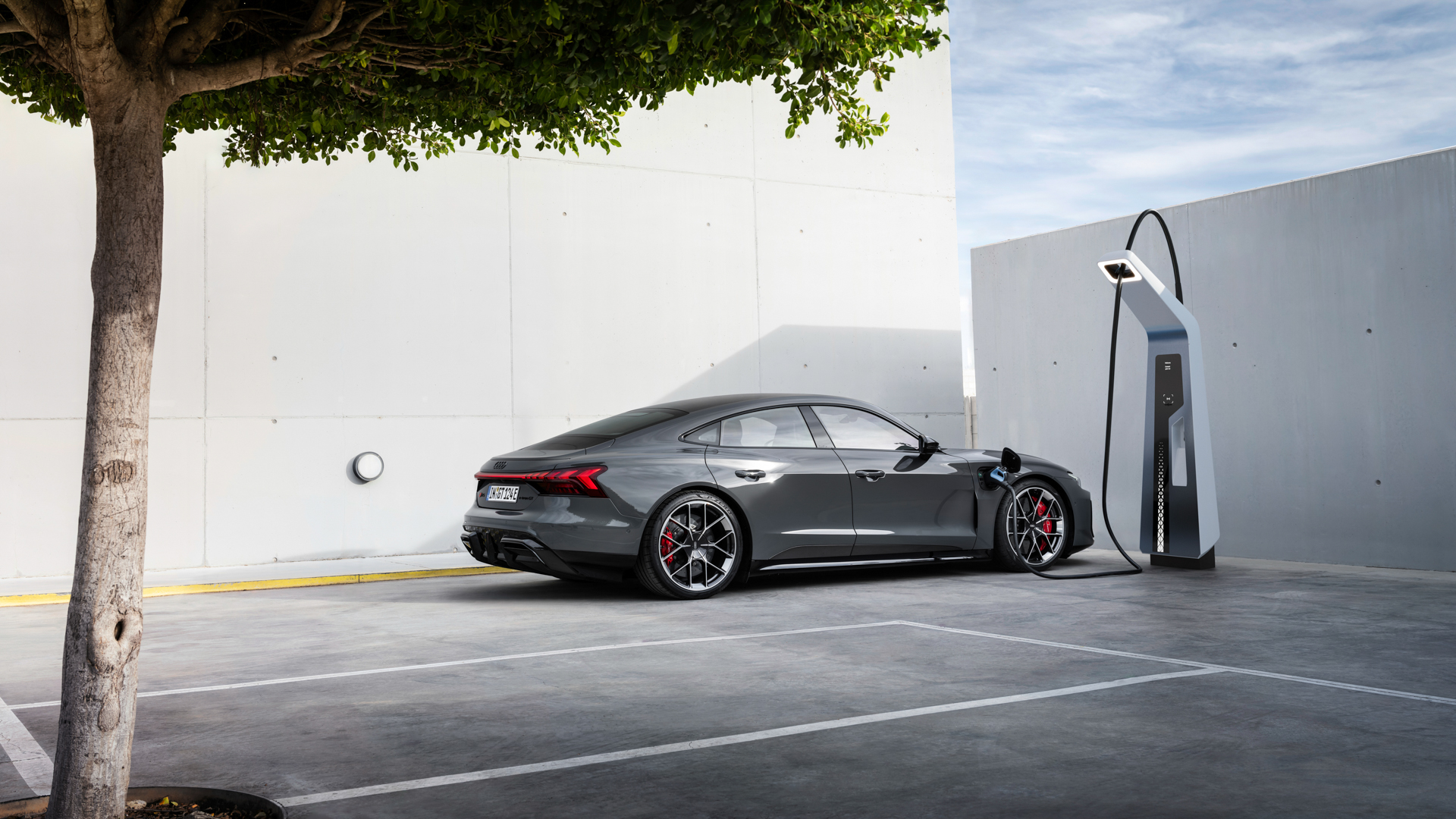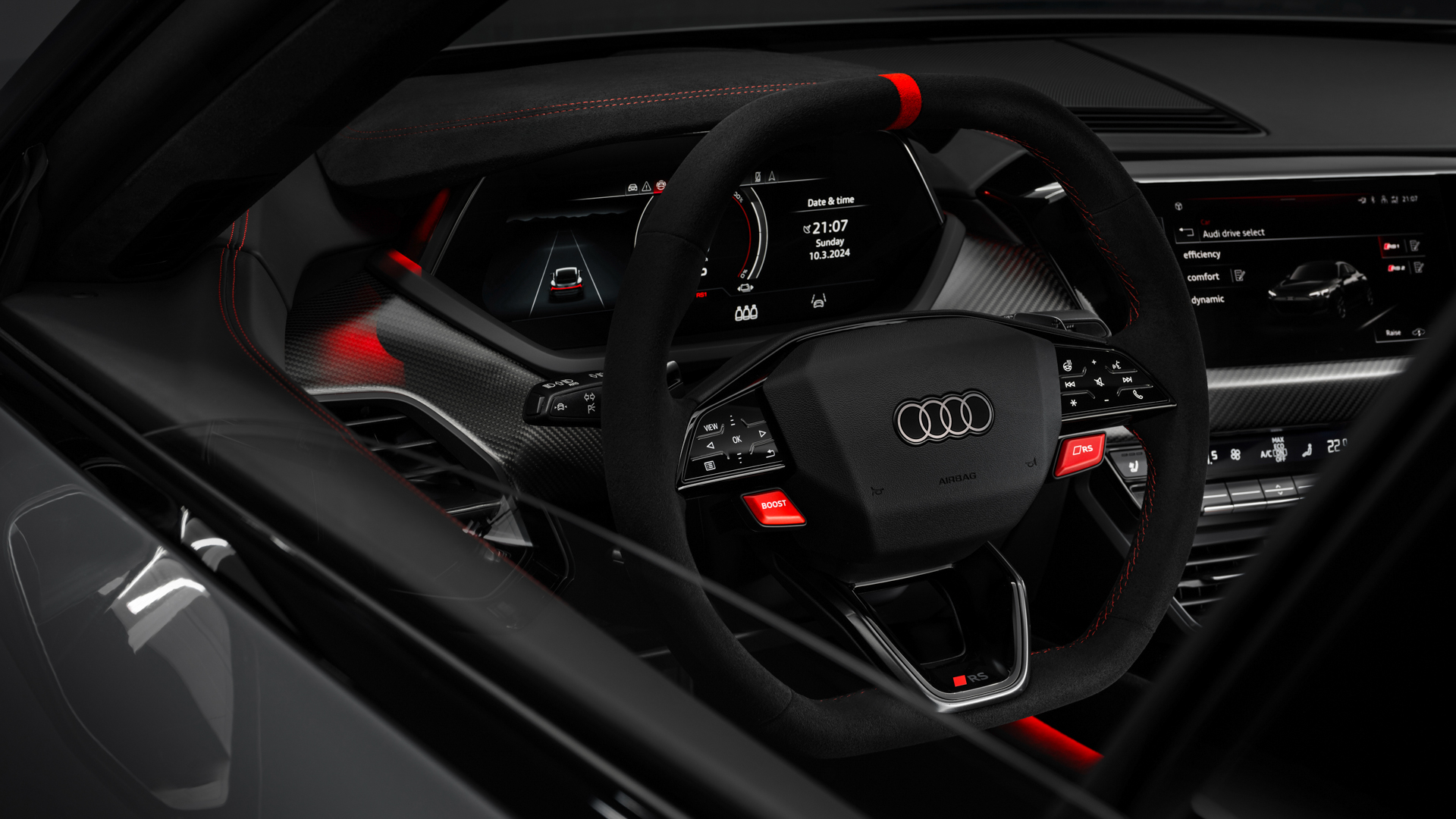
Audi's new e-Tron GT RS Performance is its most powerful street car ever, with over 900 horsepower. It forms a three-model lineup, each with more range and faster charging than the 2021 predecessor.
Related to the Porsche Taycan, the new electric Audi will be available later this summer.
Audi has revealed an updated version of its e-tron GT electric sports saloon – and with over 900 horsepower, it’s the most powerful road legal Audi ever.
The new car was widely expected, since Audi’s EV shares its platform with the Porsche Taycan, which itself was also recently upgraded with more power and a new flagship variant.
Producing 912 horsepower, the flagship GT Performance model sprints to 62 mph in just 2.5 seconds and has a top speed of 155 mph. The lesser S e-tron GT still hits 62 mph in a supercar-like 3.4 seconds and the mid-range RS e-tron GT takes 2.8 seconds. Although seriously rapid, the Audi is a little behind the Porsche Taycan Turbo GT, which hits 62 mph in just 2.2 seconds – something T3 experienced earlier this year.
Audi says it has lowered the weight of the GT’s battery pack (by 9 kg to a still-considerable 625 kg) while also increasing its energy density. The pack has a net capacity of 97 kWh and uses an 800-volt system architecture to charge at up to 320 kW, a 50 kW improvement on the previous generation of e-tron GT.

The German manufacturer says this is quick enough to add up to 174 miles of range in 10 minutes, or fill the battery from 10 to 80 percent in 18 minutes, providing you plug it into an equally powerful charger. It also says the battery can maintain a charge rate of 270 kW all the way up to 70% charge, before slowing. Maximum range for the new car is a claimed 375 miles
The three new Audi EVs are similar in specification and performance to the closely related Porsche Taycan 4S, Turbo and Turbo S, but unlike its sibling Audi has no plans to offer a single-motor, rear-wheel-drive GT as an entry-point to the range.
Like the new Taycan, the updated Audi e-tron GT is fitted with air suspension as standard, while an upgraded setup includes a system that actively pitches the car to prevent roll through corners, and keep it level when accelerating and braking. Also like the Taycan, the Audi quickly lifts when the door is opened to make getting in and out easier.

Audi has tinkered slightly with how the car looks, with the aesthetics of the three models differing more than before. The most prominent change is how the S e-tron GT has silver triangular inserts at the front, while the two versions of GT RS get a more aggressive look, and the range-topping Performance is treated to carbon fibre trimmings, too. New 20- and 21-inch wheels and paint options are also available across the updated GT lineup, while 14-way seats that were previously an option are now fitted as standard.
Inside, a new steering wheel features in all models of GT. It has a flat top and bottom, and its physical buttons have been replaced by touch-sensitive haptic controllers. The RS models have gained a new physical controller on the wheel for switching between drive modes. Behind the wheel, Audi’s digital driver display has been upgraded to show battery temperature and the maximum possible charging rate in real time.

Buyers of the RS models are treated to model-specific digital content on the driver display, including a white power display and speedometer on the RS Performance – a detail Audi says is a tribute to its 1994 RS 2 Avant, which featured white analogue dials.
UK prices will be announced later in the summer, but for now Audi says its European pricing starts at €126,000 for the S, rising to €160,500 for the range-topping RS Performance.






